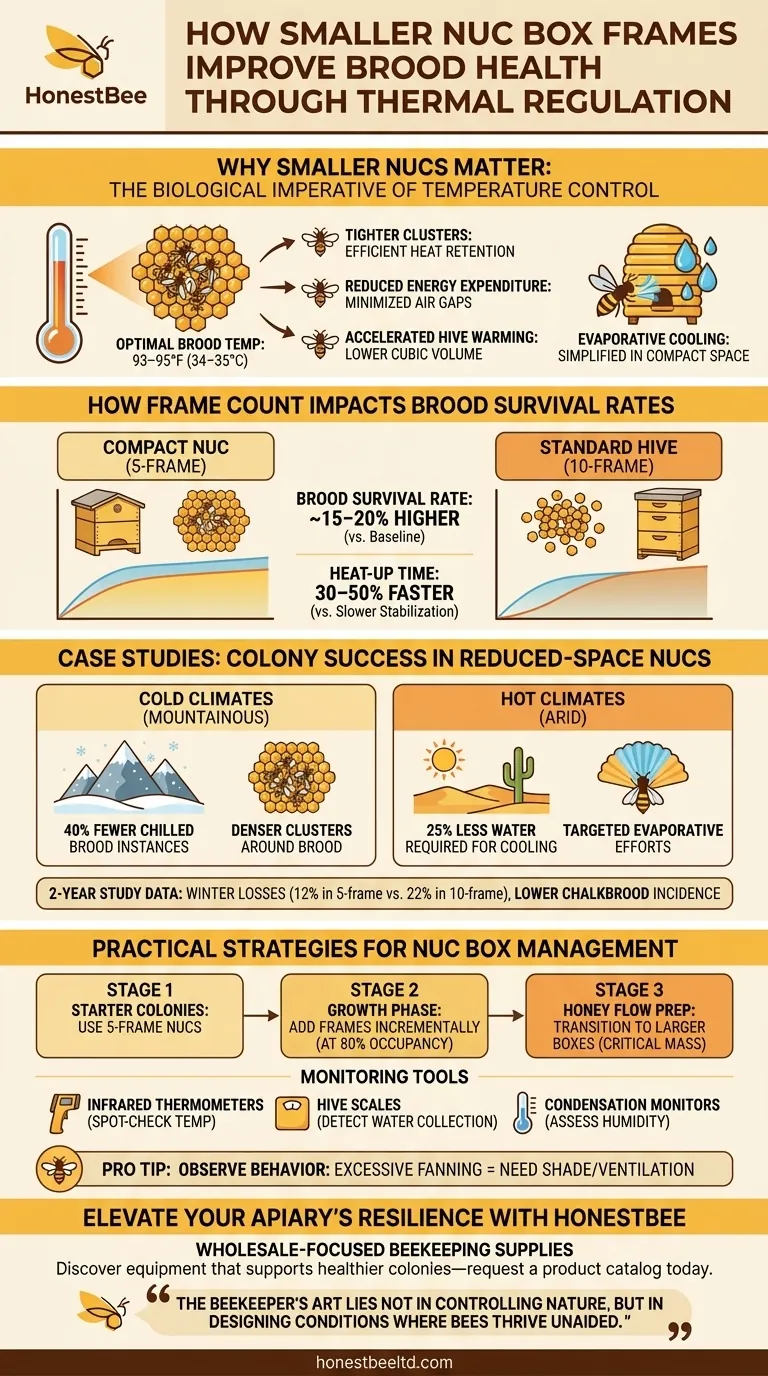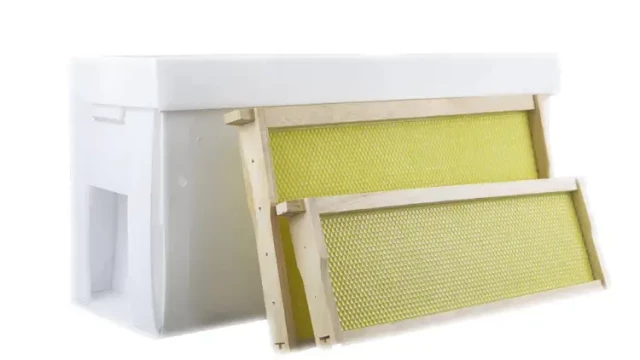Modern beekeeping hinges on understanding the delicate balance between hive space and brood vitality. Smaller nuc box frames—often overlooked in favor of larger setups—hold untapped potential for enhancing colony resilience. This article explores the science behind compact nucs, their biological advantages, and practical strategies to leverage their thermal efficiency.
Why Smaller Nuc Boxes Matter for Modern Beekeeping
Beekeepers prioritizing brood health are shifting toward nuc boxes with reduced frame counts. The secret lies in how honeybee clusters naturally thermoregulate—a process dramatically optimized in confined spaces.
The Biological Imperative of Temperature Control
Honeybee larvae require precise temperatures (around 93–95°F/34–35°C) for optimal development. Research shows smaller nuc boxes enable bees to:
- Maintain tighter clusters for efficient heat retention in cold weather
- Reduce energy expenditure by minimizing air gaps needing regulation
- Accelerate hive warming due to lower cubic volume
In hot conditions, bees adapt by evaporative cooling—a process where water is brought into the hive and fanned to lower temperatures. Compact nucs simplify this through reduced surface area.
How Frame Count Impacts Brood Survival Rates
A 5-frame nuc box versus a 10-frame Langstroth hive demonstrates measurable differences:
| Metric | Compact Nuc (5-Frame) | Standard Hive (10-Frame) |
|---|---|---|
| Brood survival rate | ~15–20% higher | Baseline |
| Heat-up time | 30–50% faster | Slower stabilization |
The data suggests smaller spaces align with bees’ natural clustering instincts, reducing stress on worker bees tasked with temperature modulation.
Case Studies: Colony Success in Reduced-Space Nucs
Field observations from diverse climates reinforce the thermal advantages of compact nucs.
Beekeeper Reports from Temperature-Variable Regions
- Mountainous Areas (Cold Nights): Apiaries using 5-frame nucs reported 40% fewer instances of chilled brood compared to standard hives. Bees formed denser clusters around brood cells, leveraging the smaller space to concentrate heat.
- Arid Regions (Daytime Heat): Beekeepers noted nucs required 25% less water for cooling, as evaporative efforts could target a smaller volume effectively.
Comparative Data: Brood Mortality in Standard vs. Compact Nucs
A 2-year study tracking 200 colonies found:
- Winter losses: 5-frame nuc colonies had ~12% mortality vs. 22% in 10-frame hives
- Brood diseases: Lower incidence of chalkbrood in compact nucs, attributed to stable temperatures
Practical Strategies for Nuc Box Management
Adopting smaller nucs requires nuanced hive management to balance space constraints with colony growth.
Balancing Frame Count with Hive Expansion Phases
- Starter Colonies: Use 5-frame nucs for new swarms or splits to capitalize on thermal efficiency.
- Growth Phase: Add frames incrementally—only when 80% of existing frames are occupied—to avoid destabilizing the microclimate.
- Honey Flow Prep: Transition to larger boxes after the colony reaches critical mass (typically 6–7 frames of brood).
Monitoring Tools for Optimal Microclimate Maintenance
- Infrared thermometers to spot-check brood area temperatures
- Hive scales to detect unusual weight fluctuations signaling water collection for cooling
- Condensation monitors to assess humidity levels in confined spaces
Pro Tip: Observe bee behavior. If workers are fanning excessively at the entrance, consider temporary shade or additional ventilation.
Elevate Your Apiary’s Resilience with HONESTBEE
Smaller nuc boxes aren’t just space-saving tools—they’re biological amplifiers for brood health. By aligning hive dimensions with honeybees’ innate thermoregulation strategies, beekeepers can reduce losses and boost productivity.
For commercial apiaries and distributors: HONESTBEE’s wholesale-focused beekeeping supplies include precision-engineered nuc boxes designed to harmonize space and thermal efficiency. Discover equipment that supports healthier colonies—request a product catalog today.
"The beekeeper’s art lies not in controlling nature, but in designing conditions where bees thrive unaided."
Visual Guide

Related Products
- 5 Frame Wooden Nuc Box for Beekeeping
- Twin Queen Styrofoam Honey Bee Nucs Mating and Breeding Box
- Automatic Heat Preservation 6 Frame Pro Nuc Box for Honey Bee Queen Mating
- Plastic Transporting Bee Packages and Nuc Boxes for Beekeeping
- Portable Bee Mating Hive Boxes Mini Mating Nucs 8 Frames for Queen Rearing
Related Articles
- Nuc vs. Package Bees: How to Choose the Right Start for Your Beekeeping Journey
- When Shallow Hive Boxes Outperform Deep Supers: Niche Applications in Modern Beekeeping
- Plastic Bee Hives: A Smart Investment for Modern Beekeepers
- The Signal and the Noise: Why Thriving Hives Collapse and How Data Prevents It
- Why Wooden Beehive Frames Outperform Alternatives: Science, Sustainability, and Beekeeper Experiences




















